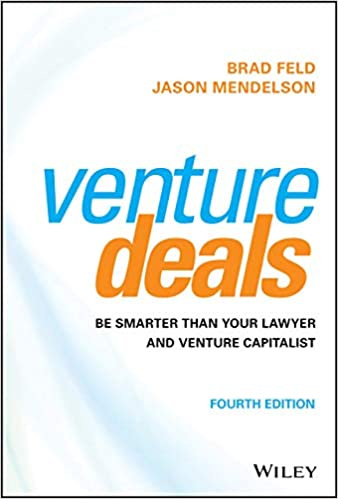Hey Everyone,
Welcome back to The Chomp—your weekly dose of the best strategic thinking content and top emerging business trends from the internet and beyond.
If you’ve been sent this email and you’re not a subscriber, you can subscribe by clicking on the blue button below.
With that, let’s dive into it.
Announcement
Going forward, I’m going to experiment with sending out The Chomp on a bi-weekly basis. As I continue to ramp up in my new role at Bloomberg Beta, I’m still trying to figure out the best cadence for this newsletter. I think going bi-weekly, for the time being, will yield a more thoughtful and insightful piece of content in your inbox.
Quick Bite
The Definition of a Creator: In a nutshell, what "startup" did to the company as a social institution, "creator" is doing it to the individual. Creators are to freelancers what startups are to web agencies. The Creator Economy isn't primarily about the future of work, it's primarily about the future of (scalable) entrepreneurship.
In reflecting on my post from last week—and in thinking deeper on how I want to approach the creator economy going forward—I realized that there's no clear consensus on what a “creator” actually is. In the context of categorizing an emerging sector of the economy, I, along with others, have struggled with classifying a vast array of people doing wildly different things into one umbrella term. So, in order to get comfortable with my usage of the term going forward, I set out to build a working definition of who and what a creator is.
Fortunately for me, Hugo Ansellem already did the work and put together a great definition that I’m comfortable adopting. In Hugo’s words, “A creator isn't someone who creates. A creator is an individual who scales without permission.” At first glance, that definition might feel a bit abstract. However, Hugo subsequently gives it form by identifying and breaking down the intersection of three key ingredients that creators live at. Individuality, leverage, and rebellion.
At the core of every creator lies an urge to express their individuality. Their work exists to showcase a uniqueness in whatever niche they choose to operate in—be it producing music or writing poetry. As creators begin showcasing their work, they scale it through internet-based leverage. As a result of internet-enabled tools and platforms, creators are able to scale their reach at nearly zero marginal cost. And in doing so, creators don’t need permission from anyone. These tools and platforms allow creators to reach the general public directly. Artists don’t need a label to share their music. Writers don’t need the backing of a publication to publish their words. Designers don’t need retail partnerships to get their products directly into the hands of their customers.
Under Hugo's definition, a creator needs to have some combination of all three ingredients in varying doses. He notes that once you remove one of these ingredients you’re left with someone who looks like a creator, yet doesn’t fit the mold. In essence, someone who creates but isn’t, in essence, a “creator”. By removing rebellion, you get a performer. Pulling out leverage gives you a purist. Sacrificing individuality leaves you with a mercenary.
While I agree that a creator needs all three ingredients in some capacity, my view differs slightly from Hugo’s in differentiating performers from creators. I don’t necessarily view giving up control in the sense of signing to a record label or a publication as means to revoke the title of Creator. As long as optionality still exists for someone to sever ties with or continue to grow independently of any institutions they choose to work with, creators can—and should—take advantage of resources that enable accelerated scaling.
Aside from this distinction, I’m on the same page as Hugo and believe his definition of a “creator” deserves broader adoption. The term “creator” might not ultimately be the best choice of language to describe a scalable individual, but that doesn’t really matter. The important thing here is reaching a broad consensus on the parameters used to define the individuals participating in the Creator Economy. Hugo’s definition is a big step in getting there.
Chum Bucket
The Calculus of Grit (Ribbon Farm)
Internet 3.0 and the Beginning of (Tech) History (Stratechery)
Mapping the Creator Economy (Hugo Amsellem)
50 (Public) Companies to Watch in 2021 (Bloomberg)
Newsletters; Or, an Enormous Rant About Writing on the Web That Doesn’t Really Go Anywhere and That’s Okay With Me (Robin Rendle)
Tweet of the Week

Song of the Week
Apple Music Link
Books
Currently Reading
Recently Read
While not the most exciting book, Venture Deals is incredibly practical. It’s hands down the best resource I’ve been introduced to on the intricacies of venture capital financing. Despite the dry nature of the content, Brad Feld and Jason Mendelson managed to make Venture Deals both approachable and interesting. This book is a must-read for any entrepreneur considering raising money via venture capital. It should be required reading for anyone on the investor side of the table in VC deals as well. (5/5)
Parting Thoughts
This Week in History
On January 22, 1984, Apple introduced the world to the Macintosh through their now-famous “1984” commercial during the third quarter of Super Bowl XVIII (Source)
"Men are disturbed, not by things, but by the principles and notions which they form concerning things."
— Epictetus
If you found something that piqued your interest this week, please help me out in expanding the reach of The Chomp by forwarding it along to a friend or sharing it with others in your network. Until next week.
-CM
This newsletter is created and authored by Cody McCauley and is published and provided for informational purposes only. The information in the newsletter solely constitutes Cody’s own opinions. None of the information contained in the newsletter constitutes—or should be construed as—investment advice.





![Alchemy: The Dark Art and Curious Science of Creating Magic in Brands, Business, and Life by [Rory Sutherland] Alchemy: The Dark Art and Curious Science of Creating Magic in Brands, Business, and Life by [Rory Sutherland]](https://substackcdn.com/image/fetch/$s_!ZzHi!,w_1456,c_limit,f_auto,q_auto:good,fl_progressive:steep/https%3A%2F%2Fbucketeer-e05bbc84-baa3-437e-9518-adb32be77984.s3.amazonaws.com%2Fpublic%2Fimages%2F8d55ecd1-7652-4fe9-a53b-a2e8b7c55db2_333x500.jpeg)

